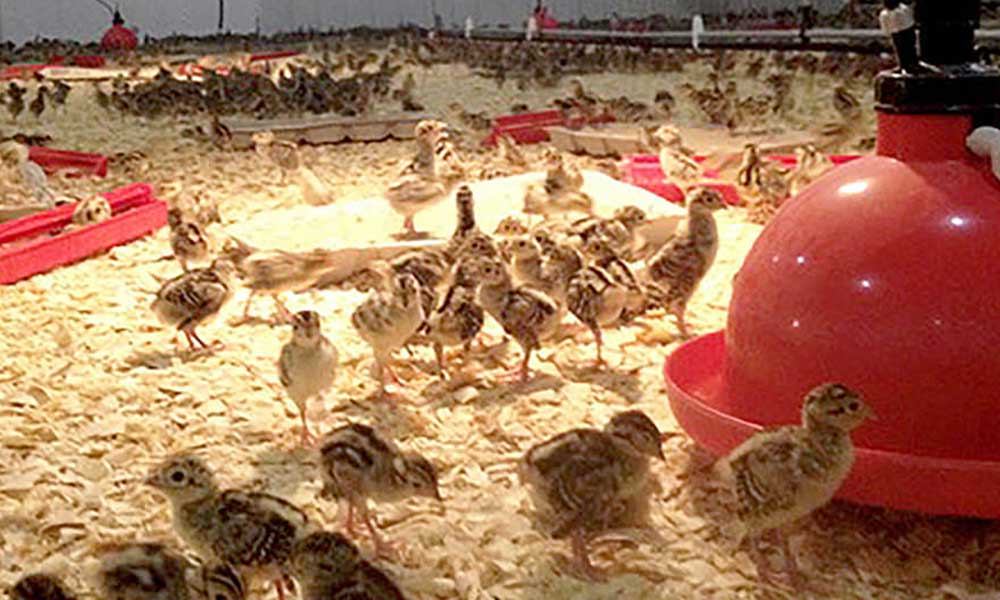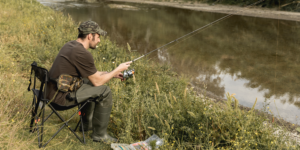Raising pheasants can be a rewarding and fulfilling endeavor for wildlife enthusiasts, conservationists, and landowners. By creating suitable habitats, implementing effective management strategies, and providing proper care, you can contribute to the preservation and enhancement of the pheasant population while creating a thriving environment for these beautiful birds. This comprehensive guide will cover key aspects of raising pheasants, including habitat management, brooding, nutrition, predator control, and release techniques. Let’s explore each of these areas in detail.
Why limit yourself to public land when there are millions of acres of private land to explore.
Understanding Wild Pheasants
Wild pheasants, scientifically known as Phasianus Colchicus, are native to Asia but have been introduced to many parts of the world, including North America. These game birds are known for their striking appearance, with the male (rooster) displaying vibrant plumage featuring blue-green heads, red face wattles, and distinctive white neck rings. Females (hens), on the other hand, have a more subtle buff-brown coloration but share the long, pointed tails with the males.
In their natural habitat, wild pheasants inhabit grasslands, agricultural fields, and brushy areas. They are ground-dwelling birds and spend their lives primarily on the ground, rarely perching in trees. Pheasants are known for their ability to fly short distances, reaching speeds of up to 60 miles per hour. They are social birds, often found in small flocks, and form harems during the breeding season.
Creating Suitable Housing and Pen Design
Providing suitable housing and secure pens is crucial when raising pheasants. A well-designed pen ensures the safety and well-being of the birds while preventing escapes and protecting them from predators. Consider the following factors when designing and constructing pheasant pens:
Pen Location: Choose an area with adequate space and suitable habitat conditions for the pheasants. Ensure it is away from potential disturbances and predators.
Pen Size: The size of the pen depends on the number of pheasants you plan to raise. Aim for at least 25 square feet per bird to allow them to move comfortably.
Escape Prevention: Construct pens with sturdy fencing and secure netting to prevent the birds from flying out. Buried mesh fencing can deter predators from digging under the pen.
Environmental Considerations: Provide adequate shade, natural bushes, and weedy vegetation to create a more natural and comfortable environment for the pheasants.
Additionally, consider the flooring and bedding materials within the pen. A sand base on top of the ground makes cleaning easy and helps maintain a clean and dry pen. Adding agricultural lime to the sand can help absorb odors and prevent bacterial growth.
Feeding and Nutrition
Proper nutrition is essential for the overall health and growth of pheasants. A balanced diet ensures the birds receive the necessary nutrients at each stage of their development. Consider the following guidelines for feeding and nutrition:
Starter Feed: Start with a high-quality game bird starter feed with a protein content of around 30%. This feed provides essential nutrients for the growth of pheasant chicks.
Transitional Feeds: As the birds grow, transition to a grower feed with slightly lower protein content and then to a maintenance feed suitable for adult pheasants.
Supplemental Feeding: In addition to commercial feeds, offer supplemental feed options such as insects, grains, dried mealworms, and green vegetation. This mimics their natural foraging behavior and provides added nutritional variety.
Clean Water: Ensure a constant supply of clean water for the pheasants. Automatic waterers or shallow water bowls can be used, making sure the birds can drink without the risk of drowning.
Regularly monitor the birds’ feeding behavior, ensuring they have access to feed and water at all times. Adjust the feed quantity as needed to prevent overfeeding or underfeeding.
Health and Disease Management
Maintaining the health of your pheasants is crucial for their overall well-being and successful rearing. Here are some important considerations for health and disease management:
Regular Monitoring:
Regularly observe the pheasants for any signs of illness or abnormalities. Pay attention to their behavior, appetite, droppings, and overall appearance. Promptly address any health concerns.
Preventive Measures:
Implement preventive measures to minimize the risk of diseases. This includes maintaining a clean and hygienic pen, controlling parasites, and avoiding overcrowding.
Parasite Control:
Pheasants can be affected by various parasites, including worms. Establish a regular deworming schedule and work with a veterinarian to ensure appropriate treatments.
Avian Veterinarian:
Establish a relationship with an avian veterinarian who can provide guidance and assistance in managing the health of your pheasants.
When handling sick or injured birds, it’s important to follow proper biosecurity protocols to prevent the spread of diseases.
Breeding and Incubation
Understanding the breeding and incubation process is essential for successfully raising pheasants. Pheasants have a defined breeding season, usually occurring from April to June. During this time, roosters mate with several hens. Here are some key points to consider:
Nesting Habits:
Pheasant hens build their nests on the ground, using vegetation and feathers. The nests are generally around 3 inches deep and 7 inches across. Provide suitable nesting cover within the pen.
Incubation Period:
Pheasant eggs typically have an incubation period of 23 days. Ensure a suitable incubator with proper temperature and humidity control for successful egg hatching.
Brooding Chicks:
Once the chicks hatch, provide a well-prepared brooder house with appropriate temperature control, bedding, and access to feed and water. Gradually transition them to outdoor pens as they grow. Proper care and attention during the breeding and incubation stages are crucial for the successful rearing of pheasant chicks.
Pheasant Chicks

Raising pheasant chicks is a delicate and crucial stage. These little birds require special care and attention to ensure their healthy growth and development. When pheasant chicks arrive, they need a warm and secure brooder setup. Provide a well-insulated brooder house with a heat lamp to maintain an optimal temperature of around 95°F (35°C) during their first week. Use a high-quality game bird starter feed with a protein content of approximately 30% to meet their nutritional needs. Additionally, ensure a constant supply of clean water. Regular monitoring of the chicks is essential to identify any health issues or signs of distress and provide appropriate care. As they grow, gradually introduce them to the outdoors in a controlled manner to prepare them for their eventual release into the wild.
Predator Control and Security
Minimizing predation is important to ensure the survival of raised pheasants. Here are some strategies to consider for predator control and enhancing pen security:
Fencing:
Install predator-proof fencing around the pen to prevent access by larger predators like raccoons or coyotes. Use sturdy materials such as woven wire or nylon netting to deter predators.
Visual Deterrents:
Implement visual deterrents such as scarecrows, reflective tape, or predator silhouettes to discourage predators from approaching the pens.
Trapping and Removal:
Employ trapping and removal techniques to manage specific predators that pose a threat to the pheasants. Consult local wildlife authorities for guidance on legal and ethical trapping methods.
Maintaining a secure and predator-resistant pen environment greatly enhances the safety and well-being of the pheasants.
Release and Habitat Considerations
When the pheasants are ready to be released into the wild, careful planning and considerations are necessary for their successful adaptation. Follow these steps for a smooth transition:
Conditioning Period:
Gradually acclimate the pheasants to the outdoors by placing them in large, covered pens within the release area for a few weeks. This allows them to become familiar with the surroundings.
Wing-Clipping:
Clip one wing of each bird to limit their ability to fly long distances. This helps them adjust to the new environment and reduces the risk of escape during the early stages.
Gradual Release:
Open the pens gradually to allow the pheasants to explore their surroundings while having access to supplemental feed and water. Monitor their behavior and ensure they are adapting well.
Habitat Enhancement:
Focus on managing the release area to provide suitable habitat and cover for the released pheasants. This includes maintaining a diverse mix of grasses, shrubs, and brush, as well as ensuring access to food and water sources.
Regular monitoring and assessment of the released pheasants’ adaptation, survival, and population dynamics are important for ongoing management efforts.
Marketing and Economic Aspects of Raising Wild Birds
The hassle free way to monetize your acreage.
Wild pheasant raising can also have economic benefits. Explore potential markets for your pheasants, such as gourmet food restaurants, hunting preserves, or individuals interested in purchasing live birds for restocking or custom slaughter. Consider the economic factors involved in raising pheasants, including costs of feed, healthcare, and infrastructure, as well as potential revenue streams.
Engage with local hunting and conservation organizations to learn about stocking efforts and collaborative initiatives that can contribute to the preservation and enhancement of wild pheasant populations.
Conclusion
Wild pheasant breeding requires dedication, knowledge, and careful management. By creating suitable habitats, providing proper nutrition, ensuring health and disease management, and implementing effective predator control measures, you can contribute to the conservation and enhancement of these magnificent birds. Remember to follow ethical and legal guidelines in all your pheasant rearing activities. Embark on this rewarding journey and enjoy the beauty of raising pheasants while contributing to their long-term sustainability.
Remember, raising pheasants is a continuous learning process. Stay informed, seek guidance from experts, and adapt your practices based on new research and insights. Together, we can make a positive impact on the preservation of these remarkable birds.
Why limit yourself to public land when there are millions of acres of private land to explore.
FAQ – Ten Top Tips for Raising Pheasants
What type of housing is best for raising pheasants?
To raise pheasants successfully, provide secure and covered pens. These pens should have sturdy fencing, buried mesh to prevent digging, and a roof to protect against predators and inclement weather.
What should I feed pheasants at different stages of development?
Feed high-protein game bird starter feed to pheasant chicks, gradually transitioning to grower or maintenance feed as they mature. Supplement their diet with insects, grains, and green vegetation to mimic natural foraging behavior.
How can I prevent health issues in pheasants?
Regularly monitor the health of your pheasants and implement preventive measures such as proper nutrition, clean water sources, and parasite control. Promptly address any signs of illness or distress and consult with a veterinarian when necessary.
What are the key considerations during the breeding season?
During this season, ensure a proper male-to-female ratio to minimize aggression. Provide adequate nesting areas with tall grasses or brush for hens to lay their eggs, and monitor nests to protect them from predators.
How can I effectively control predators and secure the pheasant pens?
Install predator-proof fencing and consider additional deterrents such as visual repellents, noise makers, or motion-activated devices. Regularly inspect the pens for any vulnerabilities and promptly address them to ensure the safety of your pheasants.
When is the ideal time to release pheasants into the wild?
The timing of the release depends on factors such as the birds’ maturity, habitat conditions, and availability of food sources. Spring and fall are commonly chosen seasons for releases, allowing the birds to acclimate to their new environment.
What are the necessary habitat considerations for released pheasants?
Ensure the released pheasants have suitable habitat with adequate cover, food sources, and access to water. Create a diverse mix of grasses, shrubs, and crops to provide a balanced environment that mimics their natural habitat.
How can I successfully acclimate pheasants to the outdoors?
Gradually introduce the pheasants to the outdoors by placing them in large, covered pens within the release area. This conditioning period helps them adjust to the new environment while still having access to supplemental feed and water.
What steps can I take to promote successful population management?
Implement proper monitoring techniques to assess population dynamics, habitat sustainability, and overall well-being. Collaborate with local wildlife management authorities and conservation organizations for guidance on best practices.
What economic opportunities are associated with raising pheasants?
Raising pheasants can provide economic benefits through various avenues, including selling live birds to private individuals or restocking programs, establishing hunting preserves, or supplying gourmet food establishments with high-quality pheasant meat.
By following these top tips for raising pheasants, you can create a thriving and sustainable environment for these magnificent birds while enjoying the rewards of conservation and potential economic opportunities.



